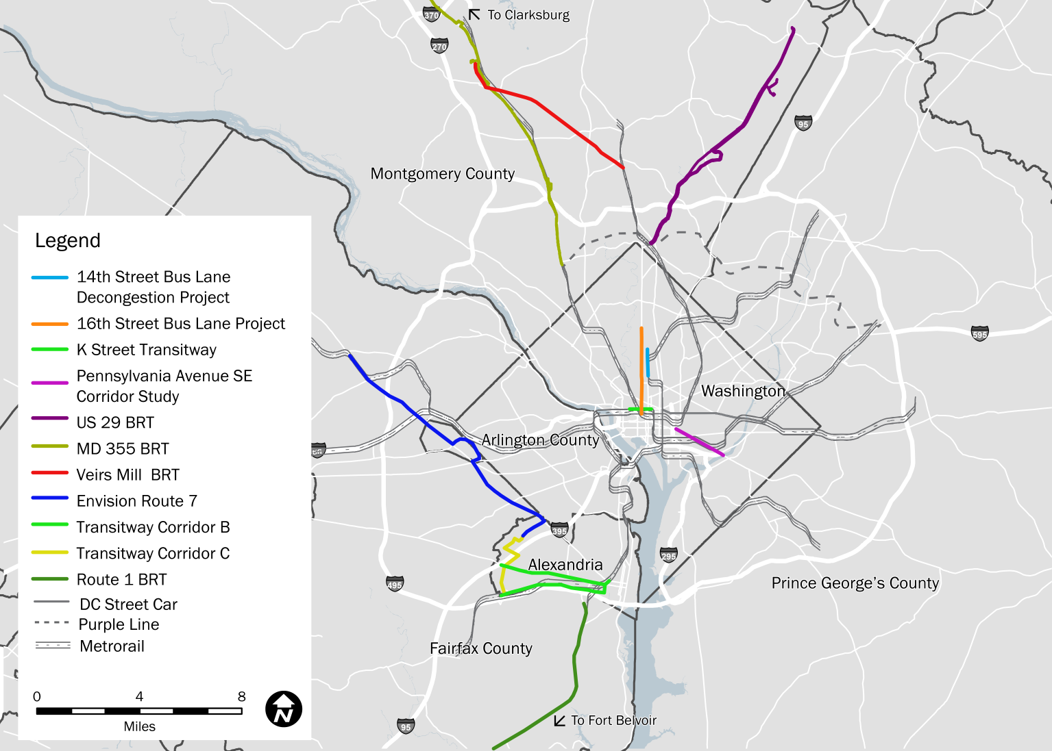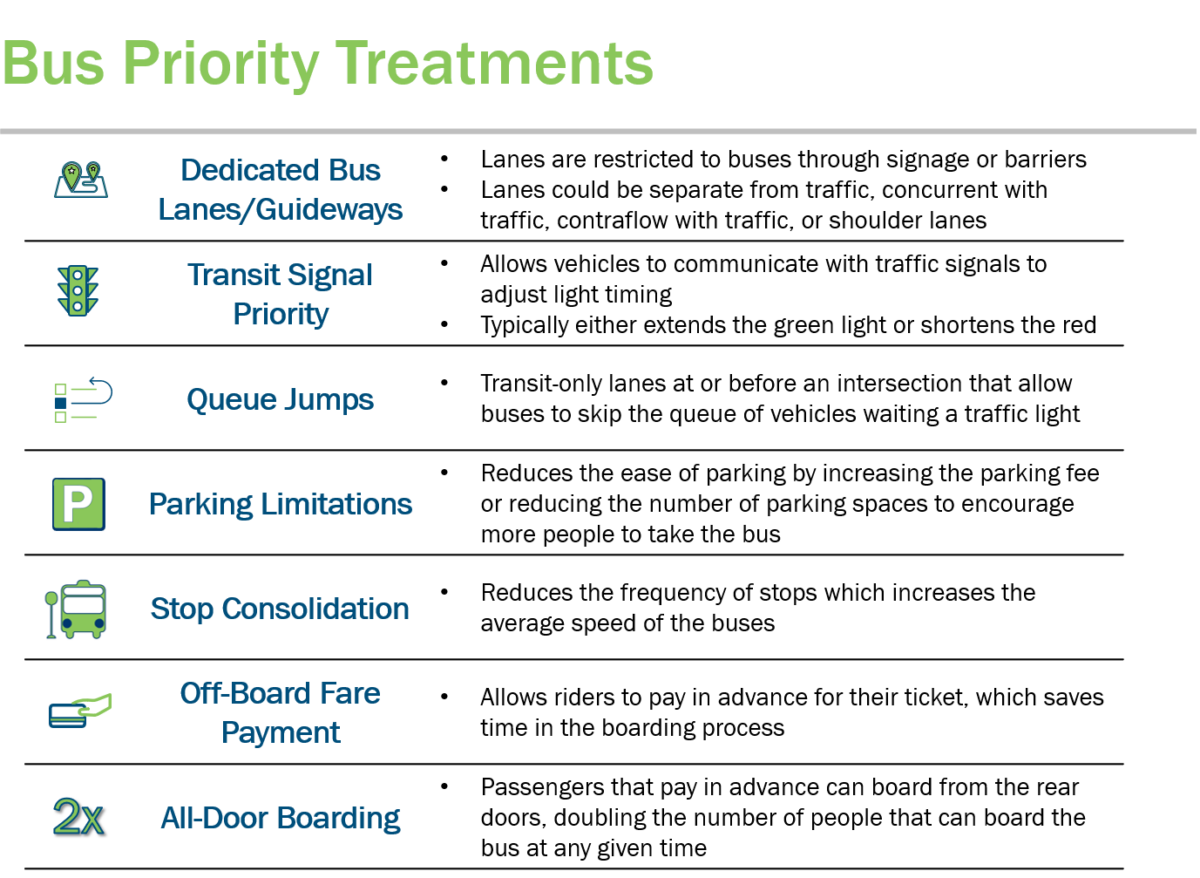Bus operators in the National Capital Region provide over 164 million trips annually; however, bus speeds and reliability have declined over the past decade, limiting residents’ access to jobs and opportunities. Investing in bus priority treatments can improve bus speed, reliability, and efficiency.
To help local planners and policymakers, Foursquare ITP developed the Bus Priority Best Practices Synthesis for the National Capital Region for the Metropolitan Washington Council of Governments (MWCOG)/National Capital Region Transportation Planning Board (TPB). MWCOG/TPB published the synthesis report in November 2020 and presented the results to the Transportation Planning Board in December 2020.
The synthesis examines several different types of bus priority treatments, including dedicated bus lanes/guideways, transit signal priority (TSP), queue jump lanes, parking limitations, stop consolidation, off-board fare payment, and all-door boarding. The synthesis highlights the results of several previous and existing bus priority efforts in the region. These efforts include the Transportation Improvements Generating Economic Recovery (TIGER) Bus Priority Project and the Bus Transformation Project (BTP). The TIGER Bus Priority Project included adding dedicated bus lanes, TSP, and/or queue jump lanes to numerous bus corridors in the region. While results were mixed; off-peak on-time performance improved on the majority of corridors and peak on-time performance improved on half of the corridors. In addition, the synthesis profiled numerous existing or planned bus priority projects in the region as well as in peer cities. These include Metroway, which has increased bus ridership on the corridor it operates by about 83 percent, and the H and I Street NW painted bus lanes, which have resulted in a one mile per hour increase in bus speeds. These profiles show both how bus priority treatments have been, or will be, implemented in the region and their costs and benefits.
To provide additional resources for policymakers and planners, the synthesis also includes a literature review focused on the benefits and costs of bus priority more broadly. Beyond improving the speed and reliability of the bus network, bus priority treatments can reduce congestion, thereby improving air quality, and help transit agencies increase their ridership. The information compiled from the literature review as well as the bus priority projects in the region and in peer cities helped illustrate how bus priority treatments can be implemented together to make a larger impact. The synthesis concludes with a matrix of the impacts of implementing treatments, including the cost per mile, degree of difficulty for implementation, and cost savings and performance improvements as a result of the treatments.

